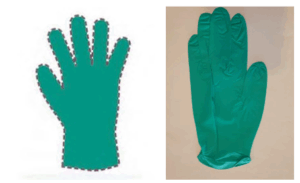The US Court of Appeals for the Fifth Circuit explained that ordinarily, when state law contradicts with federal law, the state law may be preempted by the federal law under the US Constitution’s Supremacy Clause. However, under Supreme Court precedent, state unfair-competition laws that accurately mirror the relevant provisions of federal law are not subject to preemption. Zyla Life Sciences, LLC v. Wells Pharma of Houston, LLC, Case No. 23-20533 (5th Cir. April 10, 2025) (Oldham, Ho, Duncan, JJ.)
Under the federal Food, Drug, and Cosmetic Act (FDCA), 21 U.S.C. § 301 et seq., no one may sell any new drug without prior approval from the US Food and Drug Administration (FDA). Because compounded drugs are not new but are merely remixed versions of existing drugs, registered compounding facilities are allowed to sell compounded drugs as long as they satisfy additional criteria specified in the FDCA. Six states mirror federal law by making it illegal to sell any new drug without FDA approval and provide for suit under traditional state unfair-competition law if a party sells drugs in violation of these state laws.
Zyla and Wells Pharma are competitors. Zyla sells FDA-approved suppositories containing indomethacin, a drug used to treat various ailments such as rheumatoid arthritis. Wells Pharma sells compounded indomethacin suppositories that are not FDA approved, but Wells Pharma is a registered compounding facility and thus satisfies at least one provision of the exemption. Zyla, seeking to enjoin Wells Pharma from manufacturing and selling its compounded suppositories in the six states mirroring the FDCA, filed suit under those states’ unfair-competition laws. Wells Pharma moved to dismiss under Fed. R. Civ. Pro. 12(b)(6), arguing that the state laws were preempted. After the district granted the motion, Zyla appealed.
The issue before the Fifth Circuit was whether the state laws conflict with the FDCA by incorporating it. As the Court explained, a state triggers implied “[o]bstacles-and-purposes preemption . . . when state law stands as an obstacle to the accomplishment and execution of the full purposes and objectives of Congress.” Here, (quoting the California statute) the six state statutes at issue bar selling a “new drug” that has not been approved “under Section 505 of the [FDCA].” The Fifth Circuit, citing the 1949 Supreme Court decision in California v. Zook as controlling, concluded that where there is no conflict in statutory terms between the state and federal statutes, there is no preemption. Both a state and the federal government may regulate the same conduct – whether a state has provided an additional remedy in state law is irrelevant – and the FDCA itself permits states to regulate conduct related to drug safety and effectiveness concurrently with the federal government.
The Fifth Circuit reversed the district court’s order granting Wells Pharma’s motion to dismiss and remanded the case.
read more


 Subscribe
Subscribe



